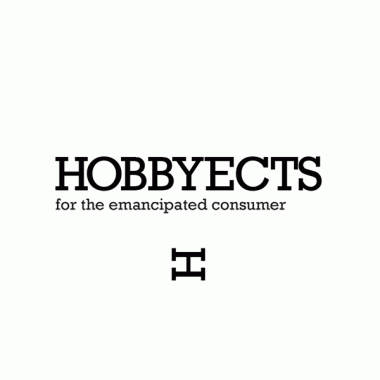FROM THE SCREW TO THE TERRITORY
INTRODUCTION
The opportunity of the DIY approach today is proportional to its mismatch with the ever growing consumer society.
From immemorial times, man has built the objects of his needs. Progressively, these needs have been supplied by specialists, with history and its historiography framing this evolution as a civilizational awareness of the sedentary advantages of specialization, accumulation and commerce.
However, in the last decades of the twentieth century, after the postmodern emptying of the trace of history, lemon squeezers that did not work were drawn and the excessive began to reveal its lack of base. At the same time, we felt the need to grow our own orange tree and to take its fruit again.
OBJECTIVES
Draw attention of the students to the potentialities that lie in redundancy and surplus, in order to think and build simple analog machines.
Here, redundancy refers to a conscious product of contemporary society that expresses itself in knowledge, infrastructures, artifacts and territory.
COMPETENCES TO BE ACQUIRED
– To distinguish, among everyday objects, its component of social necessity and those whose need is constructed mediatically.
– Gain the ability to recognize between the remaining and obsolete materials their constructive qualities.
– Understand the structure of simple analog machines, in order to deduce the relations of the surrounding space.
– Learn how to build simple analog machines.
– Discover the innate ability to build a shelter (Workshops in Residences).
– Stimulate serendipity i.e., the ability to discover what was not sought but which later appears adequate.
THEORETICAL SUBJECTS (from the screw to the territory)
– Sociological and economic framework for the opportunity of self-sufficiency.
– Statistical notions of waste.
– Stimulation of creativity through the crossing of patterns.
– Systematization of the contemporary vernacular materials.
– Genius loci and corpus loci (where the skin ends and the sensations start).
– History of the autonomous communities since the French Revolution.
– Jargon of autonomy.
– History of Intermediate Technology, Appropriate Technology, DIY and Upcycling.
– Open Source Design.
METHODOLOGY
EXTERIOR: PERIPATHIC AND HEURISTIC CONFRONTATION
The first steps will be taken by walk, talk and lead to deduction.
Walking the boundaries, dividing lines,
go for a walk on the bank of a river, pick up sticks and stones
and plastic bottles and a red box too.
Among the farms,
against the nets blue sacks and baits accumulate.
Go walking down a road,
collecting tobacco packs and more plastic bottles,
and if you have houses you will also find more surpluses nearby,
glass bottles, bed remnants and refrigerators.
On the same road but already on the outskirts of the city
there are garbage dumps with entire tiles.
In the city, in the best places we find furniture and mattresses.
Let’s go to a junk (true repository of these materials)
and we can find whole washing machines,
new or already dismantled in its valuable components
(drum, stone, poly, dynamo, motor …).
In the space of debate and construction, in a room or under a tree on the grass, several exercises will be proposed:
– I launch challenges to complete with the available materials
– students suggest functions for the same materials
The aim is to:
– build analog operating machines
– build systems to produce electricity
In Wood Workshops, discover its humanity, its life and growth, its benefits and the immense knowledge it carries.
MATERIALS
The materials used will have three sources:
– provided by me
– brought by students
– gathered during the walk
They will refer to several groups for different applications:
– Wire coat hangers, spike clamps, jars, electric connectors, vegetables drainers, clothespins, Lego parts, paper clips, cardboard boxes …
– Pendulums, bearings, metal springs, traps …
– Wires, cords, bolts, nuts
– Dynamos (for electricity production Workshops), Pringles boxes (for Workshops for the construction of WiFi amplifiers)
– Scaffoldings, formworks (for Shelter houses)
The materials will be framed within the systematization of the contemporary vernacular materials.
TOOLS
The tools will be divided in non-electric and electric.
– Hand drill, pliers, screwdriver, hammer, hacksaw, gloves. (To be brought by each student)
– Electric drill, circular saw (for Wood Workshops).
The construction of unique tools will be stimulated.
HAND DRAWING
– Drawing exercises on simple analog machines (mirrors, pulleys, elevator systems), in order to understand the prospective function of drawing .
– Drawing exercises on stress situations (springs, console slabs, large differences in depth of field or brightness …), aiming to highlight what is apparent in perception.
– Drawing exercises on abstract figures (lines, dashes, stains, crosses, surrounding circles …), aiming to practice reflection and communication of non-figurative concepts. These last exercises will take the form of drawn conversations.
DURATION
From one morning to one full day (except on Residences).
RESIDENCES
In Workshops in Residences (of several days), will be approached a question of another physical and temporal scale: to dwell.
Here, the function of shelter, water catchment and management, water cleaning and sanitation, gardening, power generation and WiFi signal amplification will be observed.
NUMBER OF STUDENTS
Four to sixteen.
AGES
These are matters whose sensitization must be done from birth; however, they will be taught to students from the age of twelve on.
All of these content are intelligible since these ages.
There will be no differences in the approach of themes between the ages, only their deepening will depend on each student in each context.
